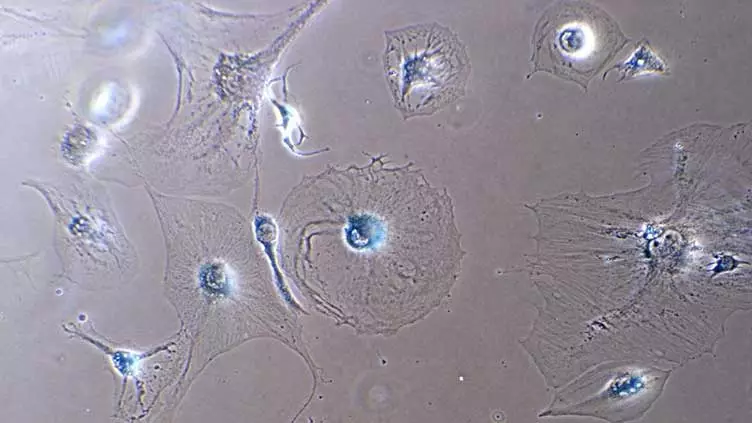Aug 31(ABC): In an unfinished part of his basement, 95-year-old Richard Soller zips around a makeshift track encircling boxes full of medals he’s won for track and field and long-distance running.
Without a hint of breathlessness, he says: “I can put in miles down here.”
Steps away is an expensive leather recliner he bought when he retired from Procter & Gamble with visions of relaxing into old age. He proudly proclaims he’s never used it; he’s been too busy training for competitions, such as the National Senior Games.
Soller, who lives near Cincinnati, has achieved an enviable goal chased by humans since ancient times: Staying healthy and active in late life.
It’s a goal that eludes so many that growing old is often associated with getting frail and sick. But scientists are trying to change that — and tackle one of humanity’s biggest challenges — through a little known but flourishing field of aging research called cellular senescence.
It’s built upon the idea that cells eventually stop dividing and enter a “senescent” state in response to various forms of damage. The body removes most of them. But others linger like zombies. They aren’t dead. But as the Mayo Clinic’s Nathan LeBrasseur puts it, they can harm nearby cells like moldy fruit corrupting a fruit bowl. They accumulate in older bodies, which mounting evidence links to an array of age-related conditions such as dementia, cardiovascular disease and osteoporosis.
But scientists wonder: Can the zombie cell buildup be stopped?
“The ability to understand aging – and the potential to intervene in the fundamental biology of aging – is truly the greatest opportunity we have had, maybe in history, to transform human health,” LeBrasseur says. Extending the span of healthy years impacts “quality of life, public health, socioeconomics, the whole shebang.”

